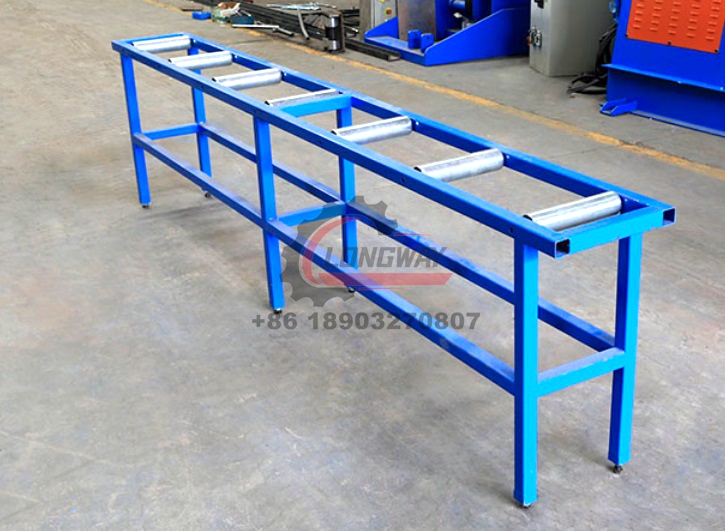Garage Door Frame Profile Rolling Machine for Efficient Metal Fabrication Solutions
Understanding the Garage Door Frame Roll Forming Machine
The modern garage door is an essential component of residential and commercial buildings alike, providing security, insulation, and curb appeal. At the heart of many high-quality garage doors is the garage door frame roll forming machine, a specialized piece of machinery designed to create the frames that support garage doors efficiently and cost-effectively. This article explores the functionality, advantages, and applications of garage door frame roll forming machines.
What is a Garage Door Frame Roll Forming Machine?
A garage door frame roll forming machine is a type of equipment used in the manufacturing process of garage doors. This machine is responsible for shaping and forming metal sheets into the desired frame profiles that will support the door structure. It operates through a continuous process where flat metal strips are fed through a series of rollers that progressively shape the material into a finished frame. This method of production is efficient, and it allows for high-volume output while maintaining precision and consistency in the frame specifications.
How It Works
The roll forming process begins with the feeding of metal strips, usually made of galvanized steel or aluminum, into the machine. As the metal moves through a series of rollers, each equipped with specific geometries, the material is shaped step by step into the final profile. The machine incorporates a cutting station where frames are cut to length as they exit the roller stations. The entire process can be automated, with programmable controls allowing manufacturers to switch between different frame designs seamlessly.
In addition to shaping, many roll forming machines are equipped with features such as punching stations for creating holes, as well as integrated welding stations for joining sections of the frame. This versatility enables manufacturers to produce a wide range of frame designs, accommodating various styles of garage doors.
Advantages of Using Roll Forming Machines
1. Efficiency and Speed One of the primary advantages of using garage door frame roll forming machines is their efficiency. These machines can produce frames at high speeds, significantly reducing the time required for production compared to traditional methods.
garage door frame roll forming machine

2. Cost-Effectiveness Roll forming minimizes waste by utilizing every part of the metal strip, as opposed to processes that may involve cutting larger pieces of metal into smaller, usable parts. This results in lower material costs and increased profitability for manufacturers.
3. Consistency and Precision The automated nature of roll forming ensures that every frame produced is uniform and meets the exact specifications required. This consistency is critical for ensuring that garage doors fit perfectly within their designated spaces, thus enhancing function and aesthetics.
4. Flexibility in Design With the ability to easily switch between different rolling profiles, manufacturers can respond to market demands by producing customized frames without significant downtime. This flexibility allows for innovation in design and broader product offerings.
5. Durability Frames produced using roll forming techniques tend to have better structural integrity. The process can create a strong and sturdy frame that adds to the overall durability of the garage door, helping it withstand the rigors of daily use.
Applications Beyond Garage Doors
While primarily used in the production of garage door frames, roll forming machines have applications beyond this niche. They are used in various sectors including automotive, construction, and furniture manufacturing. The versatility of roll forming technology makes it a valuable tool for any industry that requires precise metal shaping.
Conclusion
The garage door frame roll forming machine represents a critical advancement in manufacturing technology, offering efficiency, cost savings, and design flexibility. As the demand for high-quality garage doors continues to grow, so too will the innovation and capabilities of roll forming machines. This technology not only supports the creation of secure and aesthetically pleasing garage doors but also contributes to the overall enhancement of manufacturing processes across multiple industries. The future of roll forming is bright, with endless possibilities for further applications and improvements in design and mechanization.
-
Roof Panel Machines: Buying Guide, Types, and PricingNewsJul.04, 2025
-
Purlin Machines: Types, Features, and Pricing GuideNewsJul.04, 2025
-
Metal Embossing Machines: Types, Applications, and Buying GuideNewsJul.04, 2025
-
Gutter Machines: Features, Types, and Cost BreakdownNewsJul.04, 2025
-
Cut to Length Line: Overview, Equipment, and Buying GuideNewsJul.04, 2025
-
Auto Stacker: Features, Applications, and Cost BreakdownNewsJul.04, 2025
-
Top Drywall Profile Machine Models for SaleNewsJun.05, 2025








